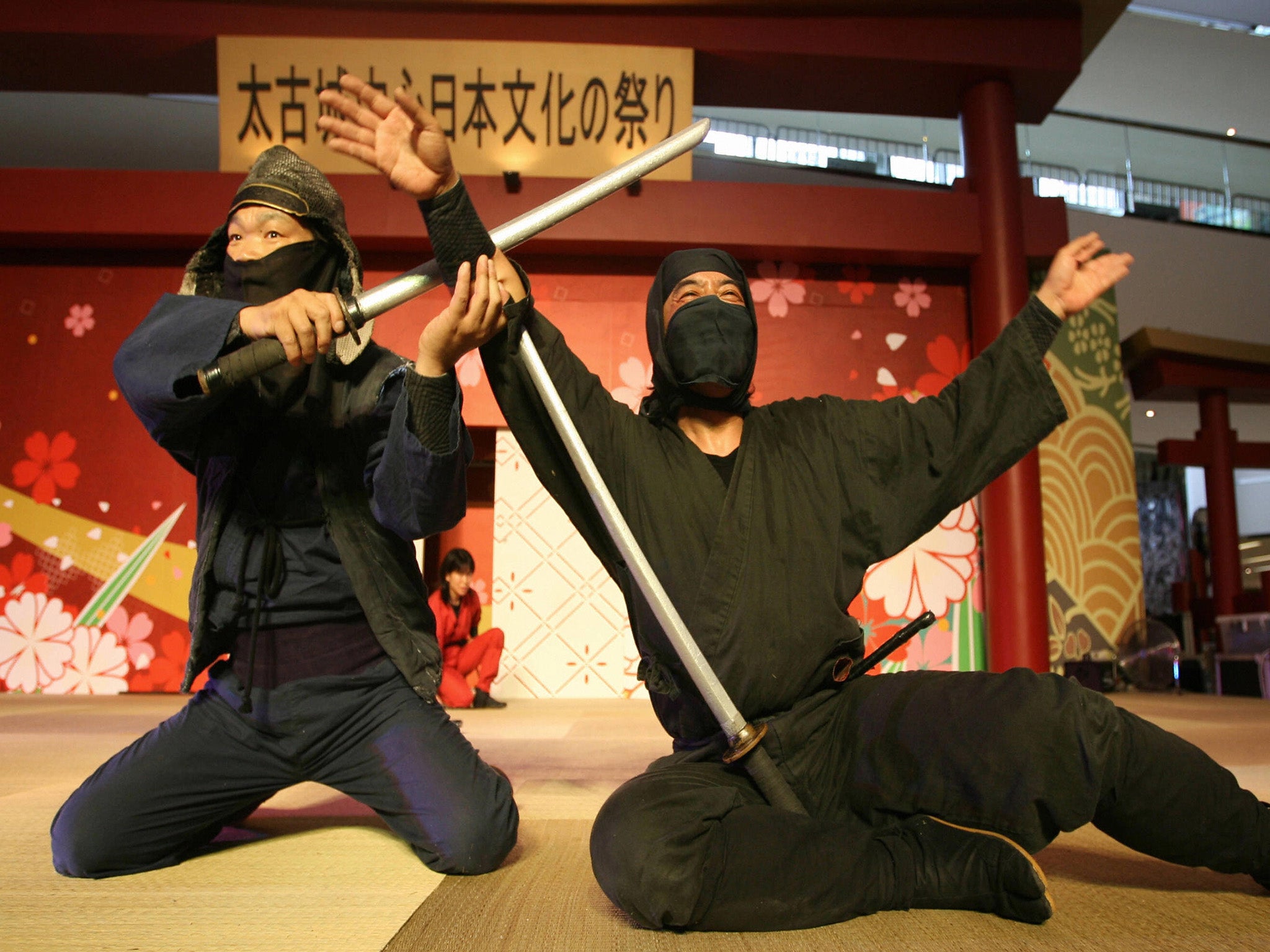Japanese city recruiting ninjas for new tourism scheme
Iga, approximately 280 miles from Tokyo, is losing young people who don’t want to live in the rural countryside

You may have heard about Japan’s demographic crisis, but the country is facing another, lesser known crisis as well.
Japan does not have enough ninjas.
In an episode of NPR’s (National Public Radio) “Planet Money” podcast, Sally Herships visited Iga, a small city in the centre of the country that claims to be the birthplace of the ninja.
Each year the city of approximately 100,000 swells by about 30,000, as tourists come to experience the annual ninja festival.
Iga, however, is suffering from depopulation. “It’s facing a shortage of those two key things you need to keep an economy humming: stuff to sell and people to buy the stuff,” Ms Herships’ cohost Stacey Vanek Smith says.
Iga is also losing young people who don’t want to live in the rural countryside. To revive the local economy, the mayor of Iga, Sakae Okamoto, is promoting the city’s ninja heritage with the aim of drawing more tourists.
“Right now in Iga, we are working very hard to promote ninja tourism and get the most economic outcome,” he said. “For example, we hold this ninja festival between late April to around the beginning of May. During this period visitors and also local people come here. Everybody will be dressed like a ninja and walks around and enjoys themselves – but recently I feel that it’s not enough.”
Japan is experiencing a major tourist boom – the Unwto (United Nations World Tourism Organisation) estimates that almost 29 million tourists visited Japan in 2017. That’s an increase of almost 20 per cent from the year before.
While some cities are benefiting economically from the influx of tourists, rural ones like Iga are apparently being left out.
With the hope of encouraging tourists to stay longer than a day in Iga, Mr Okamoto is relocating city hall and building a second ninja museum in its place. While the budget is not disclosed, Mr Okamoto has received funding from the central government – ”Japan’s government is funding ninjas,” Ms Herships says.
The project faces some hurdles, though. Iga needs to attract labour forces to work and live in the rural city as the ninja tourism scheme is extended.
This means not just builders and planners but also ninjas themselves. “There’s a ninja shortage,” Ms Herships says, “or – to be accurate – a ninja-performer shortage.”
This issue is especially difficult given Japan’s extremely low unemployment rate, which is just 2.5 per cent.
It is therefore hard to find workers in Japan, let alone highly specialised ninja performers.
“Ninja is not an inheritable class. Without severe training, nobody could become a ninja. That’s why they have silently disappeared in history,” Sugako Nakagawa, the curator of the local ninja museum, told Reuters in 2008.
“But this job does have a lot to offer,” Ms Herships says. “First of all, the pay is quite competitive. Today, ninjas can earn anything from $23,000 (£17,600) to about $85,000 (£65,300) – which is a really solid salary, and in fact, a lot more than real ninjas used to earn in medieval Japan.”
Ms Herships quotes the International Ninja Research Centre, which states that in Iga, the typical ninja earned an inflation-adjusted $8,000 (£6000) to $17,000 (£13,000) a year.
Mr Okamoto faces an uphill battle, though. The Mie Prefecture, where Iga is located, as a whole attracted just 43 new young residents last year; Iga alone lost 1,000 residents.
Read more:
• This chart is easy to interpret: It says we’re screwed
• How Uber became the world’s most valuable startup
• These 4 things could trigger the next crisis in Europe
Read the original article on Business Insider UK. © 2016. Follow Business Insider UK on Twitter.
Join our commenting forum
Join thought-provoking conversations, follow other Independent readers and see their replies
Comments
Bookmark popover
Removed from bookmarks